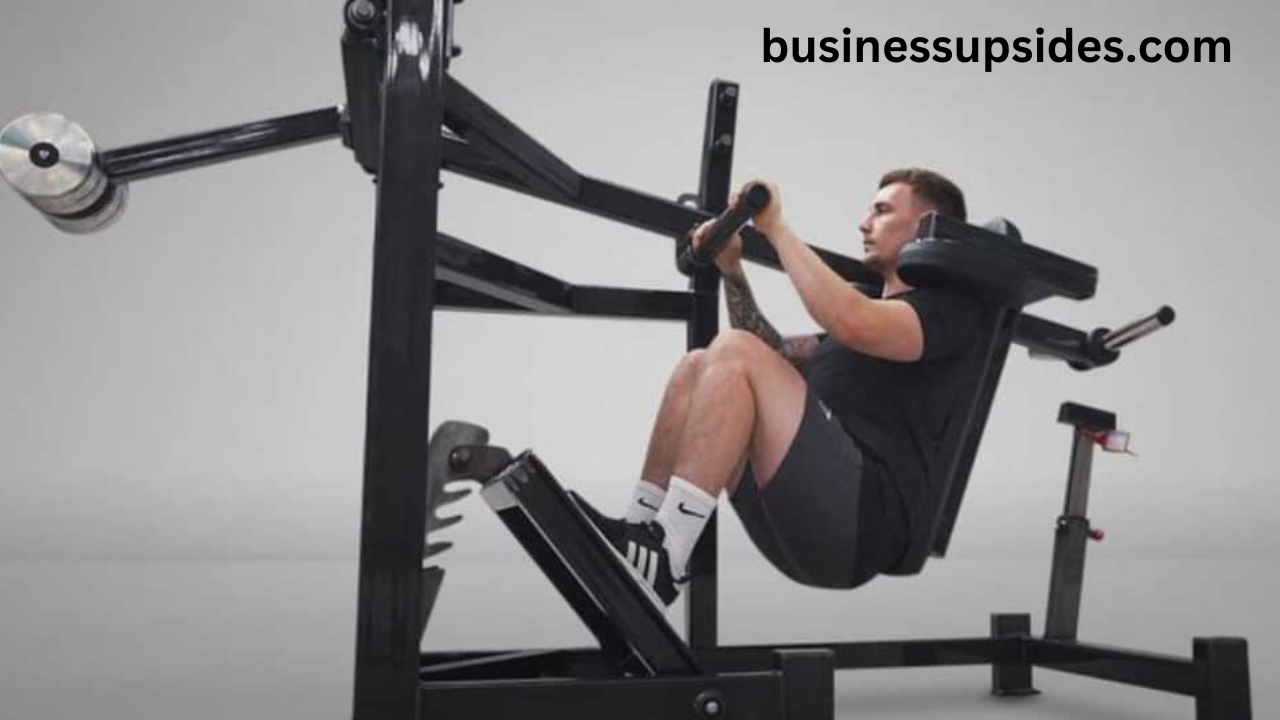Mastering the Pendulum Squat to Perfect Form and Technique
When it comes to strength training, squats are one of the most effective exercises for building lower body strength and muscle. They primarily target the quadriceps, hamstrings, glutes, and calves, making them a staple in any workout routine. However, traditional squats, whether performed with free weights or on machines, can sometimes put a strain on the lower back and require advanced balance. To counteract these issues and offer a more controlled, targeted approach, the Pendu lum Squat machine was developed.
The Pendu lum Squat has gained popularity as an alternative to the conventional squat. It allows you to safely and efficiently target the same muscle groups while reducing the risk of injury and providing greater control. Whether you’re an experienced lifter looking to intensify your leg day or a beginner aiming to improve your squat technique, the pendulum squat machine is an excellent tool to incorporate into your routine.
This guide will take a deep dive into the pendu lum squat—explaining how to perform it, its benefits, and how it compares to other squat variations.
What is the Pendulum Squat?
The Pendu lum Squat is a machine-based variation of the squat, designed to provide a more controlled, pendulum-like movement. Unlike traditional squats, which require significant core engagement and stability, the pendu lum squat machine supports your upper body and allows you to focus purely on the lower body movement.
How Does the Pendu lum Squat Machine Work?
The pendulum squat machine typically has a padded backrest, a foot platform, and a set of weights that provide resistance. The machine uses a swinging motion that mimics the motion of a pendulum to guide your legs as you squat. The foot platform is designed to move in a semi-circular arc, and as you lower your body, the platform swings backward, helping to guide the range of motion. This unique feature reduces the involvement of stabilizing muscles and helps prevent injuries, making it easier for you to focus on targeting the quads, hamstrings, and glutes.
The swinging motion allows you to squat deeper than you would be able to with a regular machine or free weights, and the reduced involvement of stabilizer muscles means there’s less risk of improper form.
Pendulum Squat vs. Traditional Squat
Both the pendu lum squat and traditional squats are excellent exercises for lower body development, but they each offer different advantages and challenges. Here’s a comparison:
1. Movement Path and Support
- Pendu lum Squat: The machine guides the movement, reducing the need for core stability and support from other muscles. The swinging motion allows for a more controlled and deeper squat.
- Traditional Squat: A standard barbell squat requires more balance, coordination, and stability from your core and other muscles. It’s a free-range movement that demands more from your body, especially if you’re lifting heavy.
2. Lower Back Stress
- Pendu lum Squat: Because the machine provides back support, it minimizes the strain on your lower back, which is especially beneficial for those who have lower back issues or want to avoid any potential injury.
- Traditional Squat: In comparison, barbell squats place more stress on the lower back, especially if the lifter does not maintain proper form or is lifting heavy.
3. Depth of Squat
- Pendu lum Squat: The pendulum machine allows you to squat deeper than you might be able to with a traditional squat due to the design of the machine. The glutes and quads are heavily activated as you reach a deep squat position.
- Traditional Squat: Depth is more dependent on the individual’s flexibility and mobility. Without proper form, squats can sometimes lead to injury if the range of motion is incorrect.
4. Muscle Activation
- Pendu lum Squat: The primary muscles targeted in the pendulum squat include the quads, hamstrings, and glutes, similar to a traditional squat. However, the machine’s guided movement can sometimes lead to less involvement of stabilizing muscles, such as the core.
- Traditional Squat: Traditional squats engage the quads, hamstrings, glutes, and calves, but also require significant engagement of the core, lower back, and other stabilizing muscles to maintain balance throughout the movement.
5. Ease of Use
- Pendu lum Squat: The pendu lum squat machine is relatively easy to use, even for beginners, as the machine guides the movement and reduces the chance of injury. However, it can be hard to find at some gyms.
- Traditional Squat: While free-weight squats are highly effective, they require proper technique to avoid injury. Beginners may find it difficult to execute traditional squats correctly without guidance or assistance.
Benefits of the Pendulum Squat
The pendu lum squat machine offers several advantages that make it an appealing option for those looking to intensify their leg workouts:
1. Increased Leg Strength and Muscle Mass
The pendu lum squat allows you to target the same muscles as traditional squats: the quadriceps, hamstrings, glutes, and calves. With its controlled motion, you can perform the movement with more stability and less risk of injury, which leads to greater hypertrophy (muscle growth). Additionally, the increased depth of the squat with the pendulum machine allows for more muscle activation in the lower body.
2. Better Range of Motion
The pendu lum squat machine facilitates a deeper squat than you might be able to achieve with a barbell squat. This increased range of motion is beneficial for fully engaging the glutes and quads, two major muscles involved in lower body strength.
3. Less Stress on the Lower Back
Unlike traditional squats, the pendulum squat machine supports your back and helps to prevent strain during the movement. The guided motion reduces the risk of rounding your back or losing proper posture, which can lead to injury in a barbell squat.
Previous article; The Importance of Physiotherapy Clinics in Post-Surgery Rehabilitation
4. Improved Stability and Balance
The pendu lum squat machine allows for greater stability by supporting the back and minimizing the need for balance. This makes it a safer option for beginners or individuals with balance issues, enabling them to perform the squat motion without worrying about falling or tipping.
5. Easier Progression
Since the pendu lum squat is a machine-based exercise, it’s easier to add weight incrementally and progress over time. This makes it an ideal option for those who want to focus on increasing their lower body strength without the added complexity of balancing a barbell.
6. Isolate the Lower Body
Because the pendu lum squat isolates the lower body so effectively, you can place all your focus on working your legs, which can lead to more targeted and efficient muscle building.
How to Perform the Pendulum Squat
To maximize the benefits of the pendu lum squat, it’s crucial to perform the exercise with proper form.
1. Set the Machine
Start by adjusting the machine to fit your body. Make sure the foot platform is at a comfortable height, and the backrest is set so that you are supported properly.
2. Position Your Feet
Position your feet shoulder-width apart on the foot platform. You may need to experiment with foot placement, depending on your body mechanics, but aim for a stance that feels stable and comfortable. Keep your feet flat and ensure your knees track over your toes as you squat.
3. Select the Weight
Choose a weight that challenges you but allows you to complete the set with good form. Start with a lighter weight to ensure you get the form right before progressively increasing the load.
4. Initiate the Squat
Engage your core and slowly lower your body by bending your knees. Keep your back pressed against the support pad and lower your body until your thighs are parallel to the ground, or as deep as the machine allows.
5. Press Back Up
From the bottom position, push through your heels to return to the starting position. Keep the movement controlled and focus on engaging your quads, hamstrings, and glutes.
6. Repeat
Perform the desired number of reps and sets. Typically, 3-4 sets of 8-12 reps are recommended for muscle growth.
Tips for Maximum Effectiveness
- Control the Movement: Don’t rush through the squat. Use a slow, controlled motion to maximize muscle engagement and reduce the risk of injury.
- Warm Up Properly: Always warm up before using the pendulum squat machine to prepare your muscles and joints for the movement.
- Gradually Increase Weight: Progressively increase the weight on the machine to build strength and muscle over time.
- Pay Attention to Form: Even though the machine guides the movement, it’s important to maintain proper squat form to avoid injury.
Conclusion
The Pendulum Squat is an excellent variation of the traditional squat, offering benefits like increased muscle activation, improved range of motion, and less stress on the lower back. It’s ideal for both beginners and experienced lifters, providing a controlled, guided movement that targets the quads, hamstrings, and glutes. If you’re looking to enhance your leg day routine and take your squat training to the next level, the pendu lum squat machine is definitely worth trying.











Post Comment